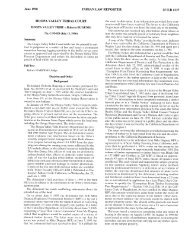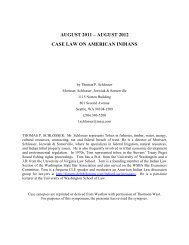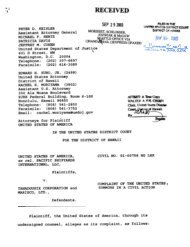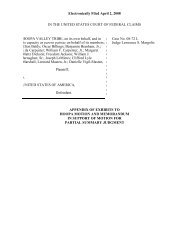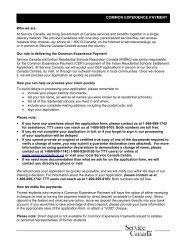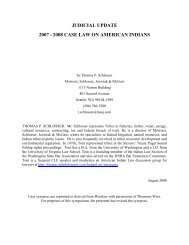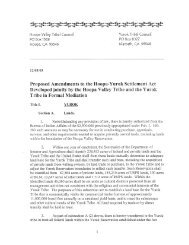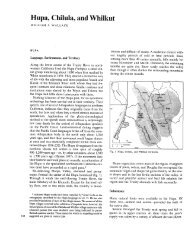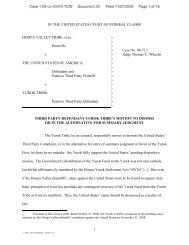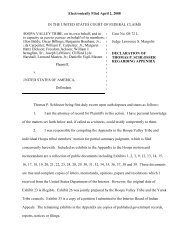You also want an ePaper? Increase the reach of your titles
YUMPU automatically turns print PDFs into web optimized ePapers that Google loves.
13Under this method of administration, the Hupa or Hoopa Tribewas generally recognized as being located on, and owning, the“Square” portion of the reservations. The Indians on the “Square”later organized a tribe and tribal government as the Hoopa ValleyTribe. The Department generally recognized the land of the originalKlamath River Reservation and the 1891 “extension” as thereservation of the Yurok tribe. That tribe has never organized.1891 to 1955From 1891 to 1955, the official position of the Department of theInterior and the Bureau of Indian Affairs (Indian Service) regardingthe rights of tribes in the Hoopa Valley Reservation variedwith the official involved and the issue under consideration.As noted earlier, for many purposes, the “Square” and the “Addition”were treated as two separate reservations and the Yurok orKlamath Indians and the Hoopa Indians were treated as two separatetribes. Indeed, the allotment of the lands of the reservation toindividual Indians and the opening of the remainder to whitehomesteading under various Acts of Congress dealt with the reservationas three separate tracts: the original Klamath River reservation;the “Connecting Strip”; and the “Square”. Yet, official correspondencerelating to the allotment process of the three tractsevidences an understanding that there was only one reservationand that the right of individual Indians to allotments were to bedetermined from that perspective.The attitude of Federal officials during this time relating to theexistence of tribal status and the early attempts of the Hoopa andYurok Indians to organize was equally vacillating and confusing. Insome respects, these officials encouraged and approved of efforts toorganize separate entities and councils representing the two tribes.Yet, conflicting correspondence exists indicating an understandingthat these separate organizations could only represent local interestsand could not act with respect to the reservation as a whole.By 1952, however, when the Commissioner of Indian Affairs approvedthe constitution and bylaws of the Hoopa Valley Tribe, theposition of the Department, at least on a de facto basis, was thatthe “Square” was a reservation for the Hoopa Valley Tribe andsubject to the management of the Hoopa Valley Business Councilelected pursuant to that constitution. Under the constitution, theDepartment recognized the membership of the Hoopa Valley Tribewhich did not include most of the Yurok or Klamath Indians.Jessie Short v. United StatesThis administrative position continued basically unchallengeduntil 1955, when substantial tribal revenues from the sale of commercialtimber from the “Square” began to be realized. Beginningin 1955, the Secretary of the Interior began to credit revenue derivedfrom the “Square” to a trust account separate from revenueearned from other portions of the Hoopa Valley Reservation.From January of 1955 until February of 1969, the Secretary,upon the request of the Hoopa Valley Business Council, each yeardisbursed from the Hoopa Valley trust fund per capita payments to



